Ever since Nintendo launched the Family Computer (Famicom) in Japan in 1983, the company has been on top of the video game business in one form or another. Even when they found themselves being left behind in the home console market by new rivals like Sony or Microsoft, they always had an ace up their sleeve: the handheld market.
From the original Game Boy in 1989 to the Switch of today, Nintendo's grasp on the portable market has been more or less absolute. The Big N's handheld systems (not counting any of the original Game & Watch units) have sold over 500 million units combined.
Of course, nowadays, having a dedicated piece of tech to carry around just to play video games feels quaint, at best. After all, the smartphone in your pocket right now is probably capable of playing—hell, even storing—any and all games from those previous game systems. Could they be heading to the same graveyard to which iPhone and Android sent iPods, in-car GPS units, and eBooks?
Looking for Crossword hints & solutions? Check out latest NYT Mini Crossword Answers, LA Times Crossword Answers, and Atlantic Crossword Answers
Nintendo slowly sunsetting portable systems?
With Nintendo shutting down online service to 3DS (and Wii U) systems all over the world this week, we figured this is the perfect time to take a look back at the handhelds that have come before and rank them. Because that never goes badly, does it?
We're also including variations of handheld systems for this list, but only if that variation significantly changed what came before it. Also, if we didn't, it would have been a lot harder to come up with ten of these. Like... 73% harder. Seriously.
So, let's get started, shall we?
10) Virtual Boy
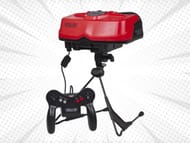
Look, we get it. I can hear some of you now. "That wasn't even really a portable system." To that, I say "It took batteries and you could carry it places—it was portable. Also, shut up." I think we can all agree, however, that it was a pretty terrible system. Except, was it?
No. No, it was. In all the ways that matter, anyway. Which is a shame, as it also had a lot going for it. For starters, it was a 32-bit system at a time when that was still considered advanced. Keep in mind, Nintendo released this system just a mere seven months after Sony released the original PlayStation in Japan.
I could go on for paragraphs about what this system did wrong—and believe me, it was hard not to. However, in reality, it was an interesting experiment that just didn't really work out. And, it led to one of Nintendo's funnier April Fool's jokes earlier this month.
9) Game Boy
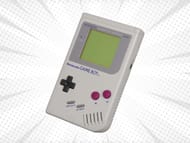
There's something... satisfying about playing a game on original Game Boy hardware. Maybe it's the weight and size of the system, considering what came after it. Perhaps it's just nostalgia or the sense of gaming history that comes with using one.
Whatever it is, that's pretty much all it has going for it. Yeah, this thing was a beast back in its day, sure. Compared to literally every other handheld system released since, it's neigh-unplayable. You can't even see the screen without an external light source, and when you can see it, all the graphics are in a lovely shade of pea soup green.
The original Game Boy had plenty of amazing games. It was also smart design for the time. The system's creator, Gunpei Yokoi, focused on making it affordable, sturdy, and energy efficient. On those points, he succeeded.
8) Game Boy Pocket
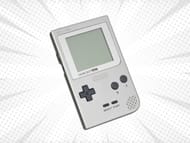
Released in 1996, the Game Boy Pocket also included some other quality-of-life improvements, to boot. For starters, the Pocket only required two AAA batteries to get the same longevity the original system's four AA batteries produced. It also featured a larger screen—and one that had black & white graphics as opposed to the "baby puke green" ones we were used to.
Still, it had no internal light source, so if you were in the backseat during a car trip at night... sorry. Around this time, Nintendo also released the Game Boy Light, which handled this problem, but only in Japan. Hence why it isn't on this list.
7) Game Boy Micro
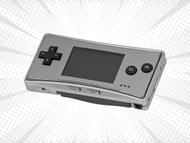
We're stepping away from the original Game Boy and its variations to talk about a version of the Game Boy Advance. Now, we're going to go into the original GBA in due time, but we felt this version deserved this particular spot on the list.
The Game Boy Micro is adorable. It literally fits in the palm of your hand. It has a stunning display and, yes, it has a backlight. It also had changeable faceplates—a lot of them.
Unlike any of the other versions of the GBA, the Micro wasn't backwards compatible with Game Boy or Game Boy Color games. This makes sense when you consider this thing is smaller than the original Game Boy carts to begin with. This isn't the ideal way to play GBA games, but it's a good one.
6) Game Boy Color
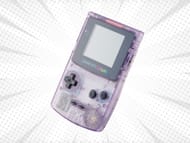
When both Sega and Atari tried to compete with Nintendo in the handheld market, they featured their systems' biggest difference from the Game Boy. "Our portable games are in color!" they'd shout. "Sure, our systems are more expensive, use way more battery power, and don't have nearly as many games. But, they're in color!"
Well, once Nintendo had pretty much asserted their dominance in the handheld market, they decided to throw their fanbase a bone. Enter the Game Boy Color— and it's exactly what it sounds like.
Slightly larger (and with a smaller screen) than the Pocket, the Color had, you guessed it, a color screen. It wasn't backlit, but it was a step up. It was also backward compatible with older Game Boy titles—it could even add color to some of these older games. Not very well, but still... at the time, it was something.
In some circles, it's considered a different system than the original Game Boy - as opposed to just a revision - as there are games released for it that only play on a GBC. Nintendo also re-released a number of original Game Boy games, like Legend of Zelda: Link's Awakening, with GBC-specific features.
5) Nintendo 3DS
The 3DS is an amazing system. Nintendo took the DS and just stuffed handfuls of awesome into it. A faster processor. Bigger screens. Screens that let you play in 3D without glasses. You know, the thing we've been asking for ever since the original Game Boy came... sorry, I'm getting a note here. Oh, we weren't asking for that? Weird.
It was a hard gimmick to promote and market, as how do you show off 3D in a 2D format? Thankfully, Nintendo was able to right the ship, giving the system the chance to get some really good games, including one of the best Mario Kart titles ever.
4) Nintendo DS
So, is the original DS better than the 3DS? In our opinion, yeah. It is. Here's why.
There's no doubt that the 3DS is technologically a better system. The Sega Master System is, technologically, a better system than the NES too. Sometimes it's not just about the specs.
The DS was a revelation when it was announced. It wasn't just the two screens, one of which was a touchscreen that pre-dated the iPhone by three years. It was also the wireless connectivity, both online and local. It was the built-in camera that not only let users play Augmented Reality games, but take and share photos too. It was the fact that it also played Game Boy and Game Boy Advance titles.
That one was a big one.
It also didn't hurt that this thing sold like crazy. It is literally the best-selling video game system of all time. This meant there were plenty of other DS gamers out there to challenge, communicate with, or introduce your pets to in Nintendogs.
3) Game Boy Advance
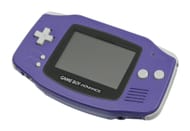
The OG Game Boy Advance really doesn't get the love it deserves. We're here to fix that.
First of all, think of the leap between the OG GB to the GBA as like the progress between the NES and Super NES. In fact, in a lot of ways, each Game Boy is almost a handheld version of their comparative home Nintendo Systems.
While it had some of the downsides of the original—no backlight or rechargeable battery, for example—it improved everything else. It was lighter and, while the design seemed a little odd at the time, it allowed for a wider screen. And out of all the systems that came out that generation—handheld or otherwise—it, hands down, had the best sound. I said what I said.
So, if the original Game Boy Advance was so great, what could possibly have been better?
2) Nintendo Switch
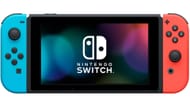
Didn't see that coming, did you?
The Nintendo Switch is, without a doubt, one of the greatest pieces of gaming technology ever created. It's not just the fact that it can... sigh... switch between being a portable and home system, but the ease with which you can do it. Come home, pop the system in the dock, pull off the Joy-Cons, and you're ready to go.
Let's not forget the amazing games that have been released for it. The system's two Legend of Zelda titles (Breath of the Wild and Tears of the Kingdom) are in that Best Games of All Time conversation. Factor in Mario Kart 8 Deluxe, Super Mario Oddysey, Metroid Dread, and Animal Crossing: New Horizons... in the words of Steve Rogers, I could do this all day.
Okay, so... what's keeping it from hitting #1? Well, it partially comes down to the fact that despite how portable it is, that's really not one of its stronger suits. It plays fine on the go, don't get us wrong. Especially with the OLED screen version released a few years ago. But it's a bit unwieldy to carry around—it doesn't really fit in your pocket, so if you don't have a bag, you're just going to have to carry it around.
We're comparing handheld systems, here, and while the Switch may be (in our opinion) a better home console than a portable one, it's still an amazing portable one. And Nintendo's second best.
So what's #1?
1) Game Boy Advance SP
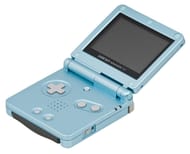
Did we just name the Game Boy Advance SP as Nintendo's greatest-ever handheld system? You're right, we did.
The GBA SP had it all. It had everything great about the original GBA and just built on it. It had a clamshell design, making it more portable while also protecting the screen. It had a rechargeable battery—and a good one. It had a monkey fightin' backlight. A good one.
It played everything the first GBA could, meaning it played the greatest library of handheld video games ever released. And, it looked cool. What more could you want?
Are you stuck on today's Wordle? Our Wordle Solver will help you find the answer.
